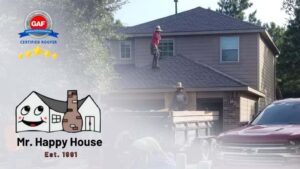
Best GAF Certified Roofers in The Woodlands, TX – Quality Roof Replacement, Gutters & Siding
Best GAF Certified Roofers in The Woodlands, TX – Quality Roof Replacement, Gutters & Siding Best GAF Certified Roofers in The Woodlands, TX – Quality
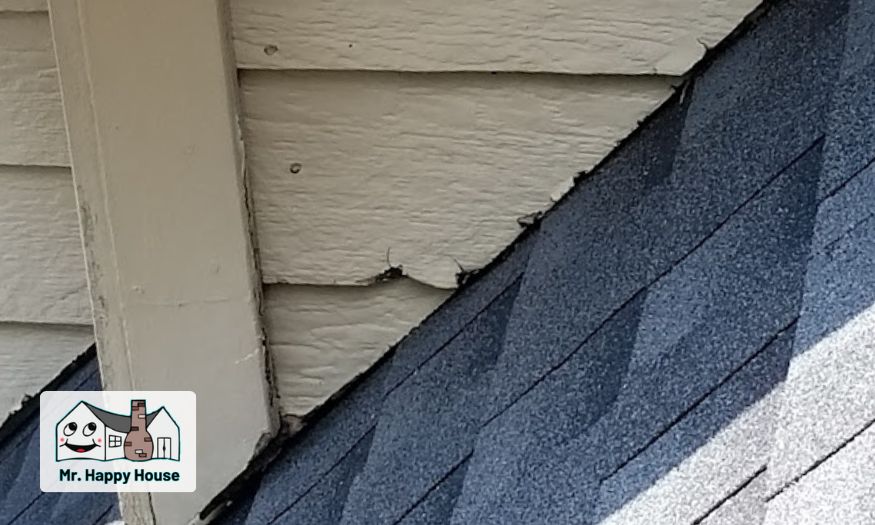
Siding is important to a home’s exterior because it shields it from the weather and improves its visual appeal. However, siding can crack with time due to wear and tear, the elements, and other issues. As a homeowner, it’s up to you to see the warning signs of damaged siding and decide when to repair or replace it.
This article will teach you how to recognize the early warning signs of damage to your siding, whether made of wood, metal, or vinyl. We’ll also talk about situations where siding repair or replacement is required, such as when a significant section is damaged, and how to ensure the new siding blends in perfectly with the old.
After reading this article, you can make educated decisions about your house siding, including whether or not to repair or replace it.
Siding is important for many reasons, and keeping it in good condition is crucial. The primary function of siding is to serve as a weatherproof barrier, protecting the structure of your house from moisture, wind, and severe temperatures. Water penetration may result in expensive structural damage, mold development, and damaged insulation, all of which can be avoided with routine maintenance.
In addition to increasing your home’s value and initial impression, keeping your siding in good condition improves its exterior appeal. Maintaining your siding helps it last longer, reducing the frequency of repairs and replacements. Overall, siding maintenance maintains your house’s durability, stability, and aesthetic appeal, giving you peace of mind and protecting your investment.
The siding on your house takes a beating from the weather and other environmental factors and may need repairs eventually and knowing when to repair or replace your siding is crucial for your home’s integrity. If you keep an eye out and learn to recognize these warning signals, you can act quickly to protect the stability of your siding. If your siding is damaged, these are some frequent warning signs.
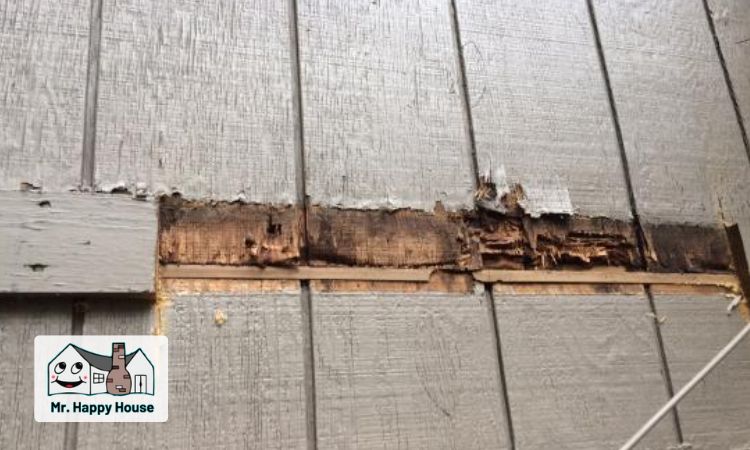
There are some following common damage signs of siding:
There are some following damage signs of wood siding:
There are some following damage signs of metal siding:
There are some following damage signs of vinyl siding:
If you know what to look for, you can decide when to repair or replace your siding. Major damage or widespread faults might require total replacement to provide a consistent and lasting siding surface. It’s important to remember that ignoring a section of damaged siding may lead to worse issues down the line, such as structural damage and a loss of insulation.
Don’t forget that if you see any of these symptoms, it’s time to call in a professional siding contractor like James Hardie for a comprehensive evaluation and expert guidance. Your home’s safety, value, and curb appeal will all increase if you take care of any necessary repairs or replacements immediately.
The amount of damage and the general condition of the material should be considered when deciding whether to repair or replace your siding. Although it is usually possible to fix small problems with the siding by making adjustments, there are times when it is best to replace the siding. Here are a few suggestions to think about when you make your choice:
Repairs may be an option if the damage is contained to a limited region. Repairs may include sealing cracks, filling holes, or replacing specific panels. If the damage is severe and covers a substantial area of the siding, however, it is advised that the whole wall or section be replaced. As a result, the exterior of your house will be maintained, and you won’t have to worry about any siding seeming out of place.
Take into account how the damage will seem visually. Although the damage may be specific, it could still distract from the home’s aesthetic value. Siding replacement is an acceptable choice for keeping an otherwise beautiful exterior.
If your siding is old and showing various symptoms of fading, replacing it may be more cost-effective than repairing it. The new siding will make the house more weatherproof, energy-efficient, and pest-proof.
There is a wide range in the durability and upkeep of siding materials. For instance, wood siding is more at risk for rotting and insect infestation so it may need more regular repairs and replacements. Rust or large dents in metal siding may indicate the need for repair. Cracks and fading are common problems with vinyl siding. If you want to know what to do about your siding, it’s important to evaluate the problems that are unique to that material.
If you want honest advice that suits your needs, you should talk to a professional siding contractor. They can assess the damage, factor in the abovementioned considerations, and give you their best option for fixing or replacing it. Taking preventative measures to fix your home’s siding can keep your house safe and increase its outside appearance and resale value.
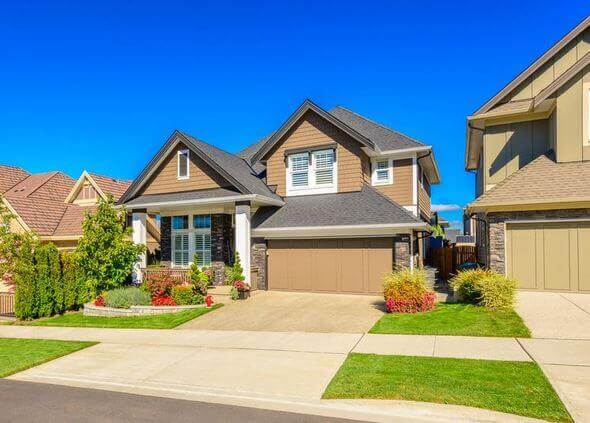
Several variables should be considered while deciding on the appropriate siding for your property. Determine the level of damage and whether or not it can be fixed before proceeding with repairs. When a substantial section of siding is damaged, it is usually better to replace the whole wall.
James Hardie Siding is a popular choice. James Hardie, known for its high quality and longevity, has several advantages. They’re built to resist the elements so they won’t break under wind, rain, or temperature swings. This siding will protect your house from weather damage for a long time since it is resistant to decay, insects, and fire.
In addition, James Hardie Siding comes in a wide variety of designs, hues, and textures, making it easy to pick an option that complements your home’s existing decor. They are available in both traditional and modern looks to meet the needs of any home.
James Hardie Siding is attractive and long-lasting and comes with a solid guarantee that will give you confidence in your decision. It would be best if you thought about the siding’s long-term performance, its visual appeal, and the guarantee it comes with before making a final decision.
When it comes to ongoing siding problems, James Hardie siding stands out as a solid option for your house siding. As a professional siding contractor, we recommend replacing the whole wall when there is extensive damage to a substantial section of the siding.
If you replace the whole wall, the siding will all be equal and generally beautiful. It is a great option for homes looking for long-lasting and low-maintenance siding due to its resilience, weather resistance, and endurance. James Hardie Siding improves the look and value of houses by solving typical siding problems while offering various stylish solutions.
Recognizing the symptoms of siding damage is essential to preserving the safety and value of your property. The amount of damage and the siding’s aesthetic value should be considered when deciding whether to repair or replace it.
When a major section of siding is damaged, it’s best to replace the whole wall to keep the building looking equal. James Hardie Siding is a great option for a replacement since it can be customized to fit your home’s style while still standing up to the elements and increasing its value and aesthetic attractiveness.
We hoped you loved this article on spotting signs of siding damage and when to repair or replace your siding, please share and tune in for more roofing, siding, and house painting content!
Our Services:













Best GAF Certified Roofers in The Woodlands, TX – Quality Roof Replacement, Gutters & Siding
Best GAF Certified Roofers in The Woodlands, TX – Quality Roof Replacement, Gutters & Siding Best GAF Certified Roofers in The Woodlands, TX – Quality
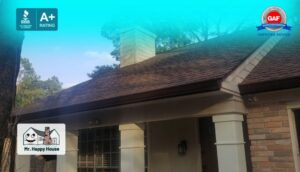
Are Gutters Part of the Roofing System?
Are Gutters Part of the Roofing System? Are Gutters Part of the Roofing System? When it comes to home maintenance, gutters often seem like a
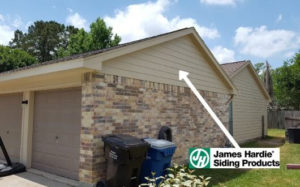
Why James Hardie is The Best Option for Home Siding
Why James Hardie is The Best Option for Home Siding Why James Hardie is The Best Option for Home Siding James Hardie stands out whether











